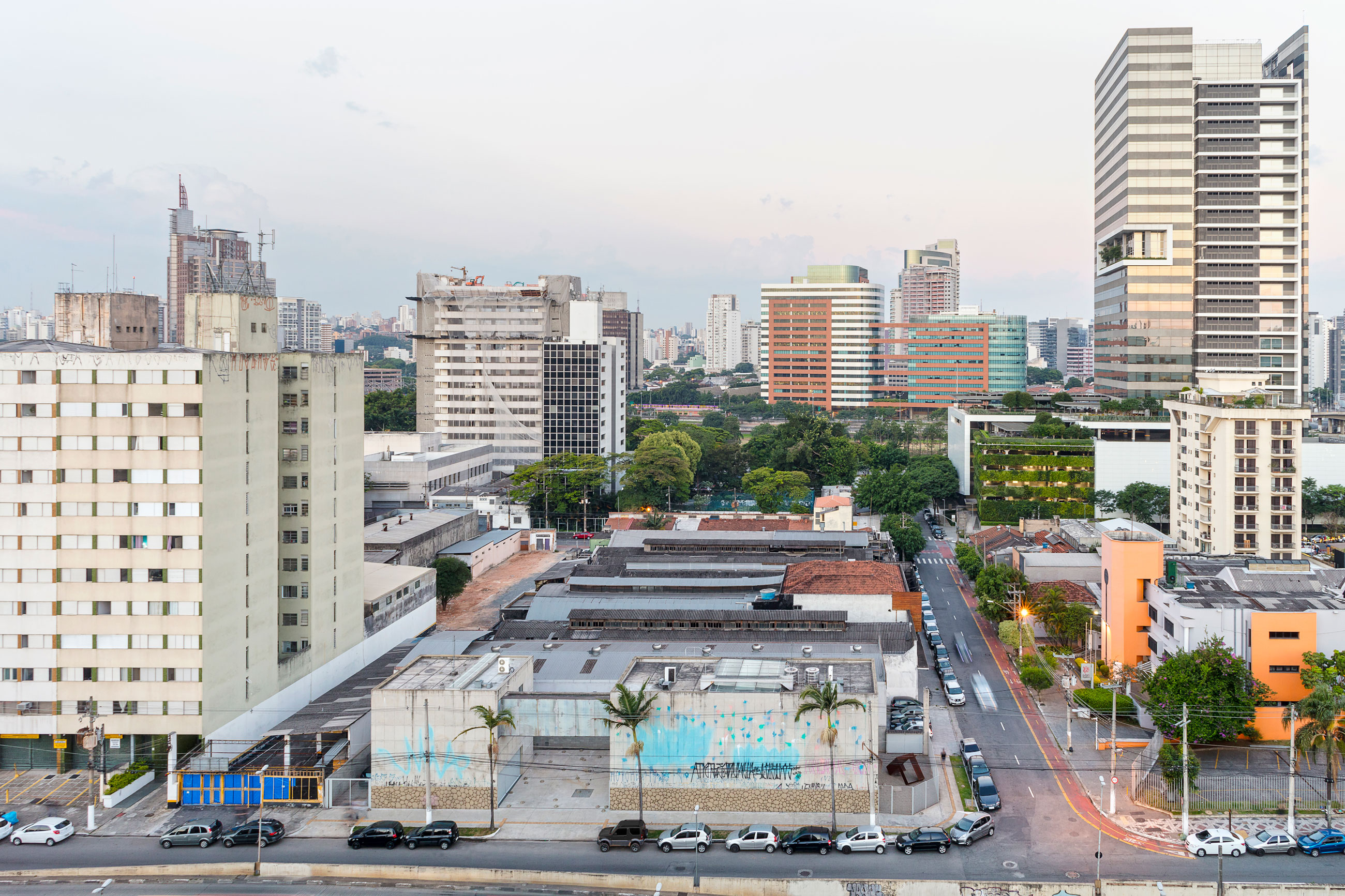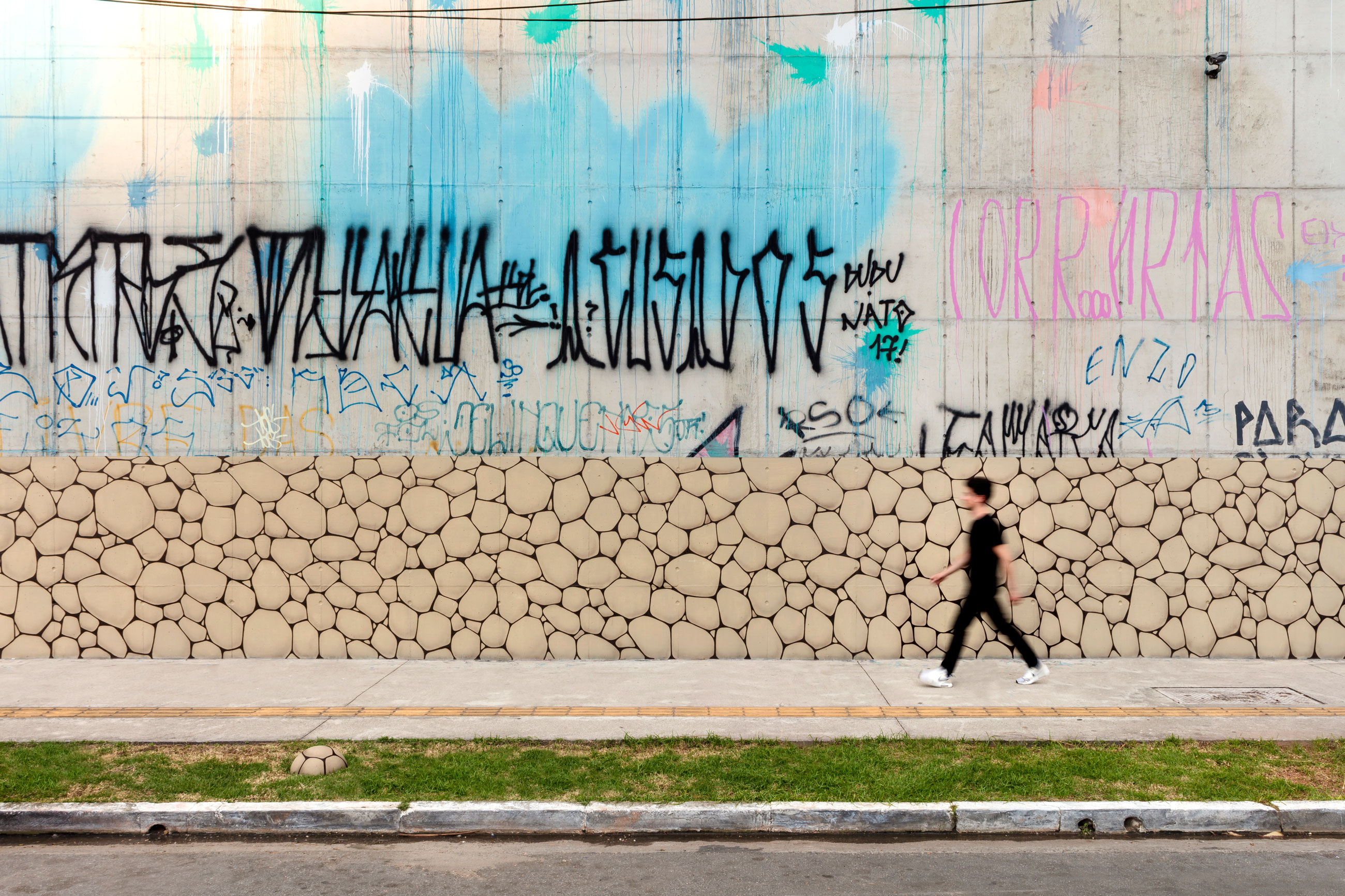Errata
in SITU
In Errata, part of the 11th São Paulo Architecture Biennial, Ana Dias Batista commissioned a street artist to graffiti the gallery’s facade with a pattern of a stone-wall, partially covering the existing set of drawings, tags and pichações (street-writing originated in Brazil) that accumulated on the building’s walls. The stone-wall graffiti is widespread in the city of São Paulo, usually used by those wishing to restrain pichações over their facades. Unlike the pichação, such graffiti is legal and socially accepted. Thus, the latter is strategically used to avoid the first, playing with a code of conduct between those who paint the walls of the city.
The height of Dias Batista’s graffiti followed the average of a stone-wall, falling short in covering the entirety of the facades and incompletely hiding the unintended pichações. The graffiti’s grey color evoked the one used by the Municipality of São Paulo during the policy of urban cleansing Clean City, spearheaded by mayor Gilberto Kassab in 2008. Then, many of the city walls were painted grey, erasing their existing drawings and tags. This measure was later revised by mayor João Doria and aligned with the increasing privatization of public space under the pretext of an urban beautification process unfolding during the exhibition.
The stone-wall pattern was also painted over several concrete road-obstacles, scattered around the gallery building. Such pattern applied over their curved shapes made these banal objects resemble turtles, which slowly moved to different parts of the neighborhood during the exhibition. By disrupting the logics of elements that restrain and control behaviors and discourses that escape the city’s official norm, Errata questioned the palliative measures of urban policies of spatial control and cleansing, while playing with the tensions between the worlds of art, popular taste, and what would be considered vandalism.
SITU #7
Errata
by Ana Dias Batista (1978, Brazil)
graffiti over facade and concrete roadblocks
variable dimensions
07.11.2017 - 20.01.2018 (on-going)
Galeria Leme, São Paulo, Brazil
Photos by Filipe Berndt, courtesy of the artist and Galeria Leme






